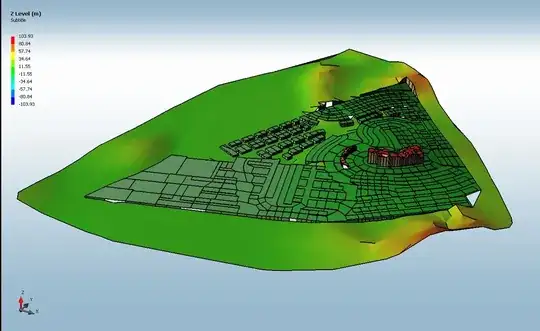I have a terrain, which is defined by mesh. And there are a lot of other polygonal faces scattered throughout the terrain, they can be located above, or below or cutting through the terrain. You can think of those faces as platforms.
A screenshot below should clarify what I mean. Despite looking smooth, all the mesh are actually consist of small elements (number> 10k) combined together, giving the false appearance of smoothness. The obvious disconnected area are platforms.

My question is, how can I generate slopes that connect between the platforms and other platforms/ terrain? The slope plane is defined as a series of piecemeal planes, starting from the edge of platforms, going down or up, depending on where is the nearest platforms or terrain elements.
I would need to generate he slope planes so that I can compute the volume difference between the slopes and the terrains, it's not just for visualization purpose.
I'm thinking about using collision detection engines to do things like this, but
- I'm not too sure whether this is the right idea
- if this was the right idea, any open source collision detection engines ( C or C++ or C#) I can use?
Edit: Any open source framework that can do this is desired.